Robots multiplying at Buckinghamshire farm
DeLaval VMS V310 milking robots were chosen by Chilton Home Farms Ltd manager Mark Woodin to milk the 250 herd of Holsteins in 2023 to manage 2 herds across 2 farms. The installation was carried out by specialists TH White following Mr Woodin’s decision to install five of the robots with the aim of growing the herd to 280.
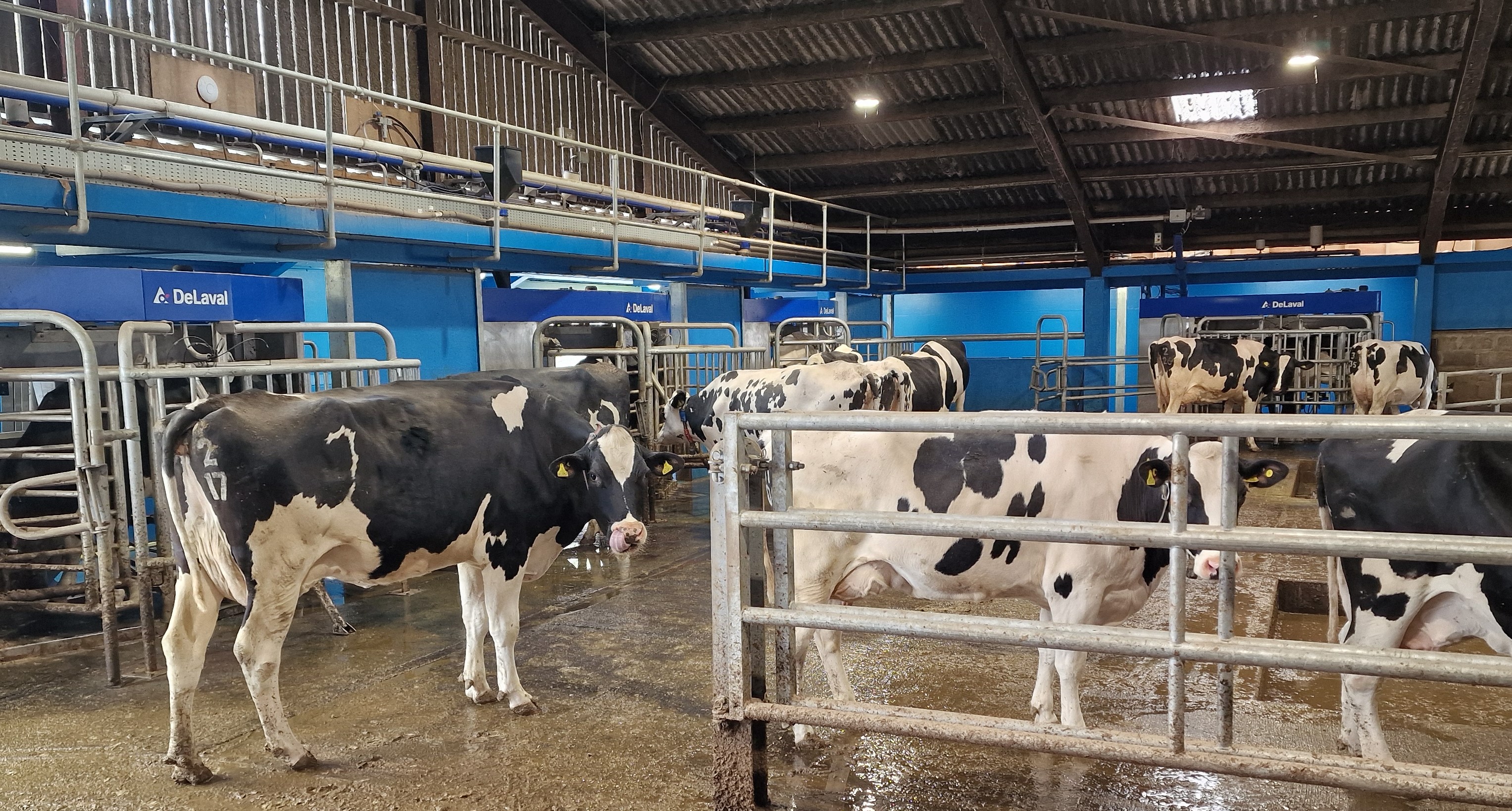
“We have housed the cows since installing the robots in August but will be offering them access to pasture this season. We have seen an instant rise in milk, moving from 34 to 36 litres on average per day, but that wasn’t our sole reason for choosing robots,” he says.
Canon Court Farm is home to the five robots, and a joint venture at a second site on Chilton’s land has seen four additional robots installed, making nine in total. With a Sainsbury’s contract to fulfil and changes in staff imminent, Mr Woodin has been preparing for the move to robots for years.
“I travelled the country looking at layouts and how we could incorporate robots into our buildings. Initially I didn’t care about brands, just how they might fit. I then took the team to see the better farms. We approached three manufacturers to get their view on layouts, and the DeLaval approach and technology stood out,” he explains.
He opted for a camera driven rather than laser driven system, believing that the camera was more accurate and that the newer technology provided better longevity.
The concept of robots, rather than a parlour, was conceived to best manage the succession planning process of Canon Court.
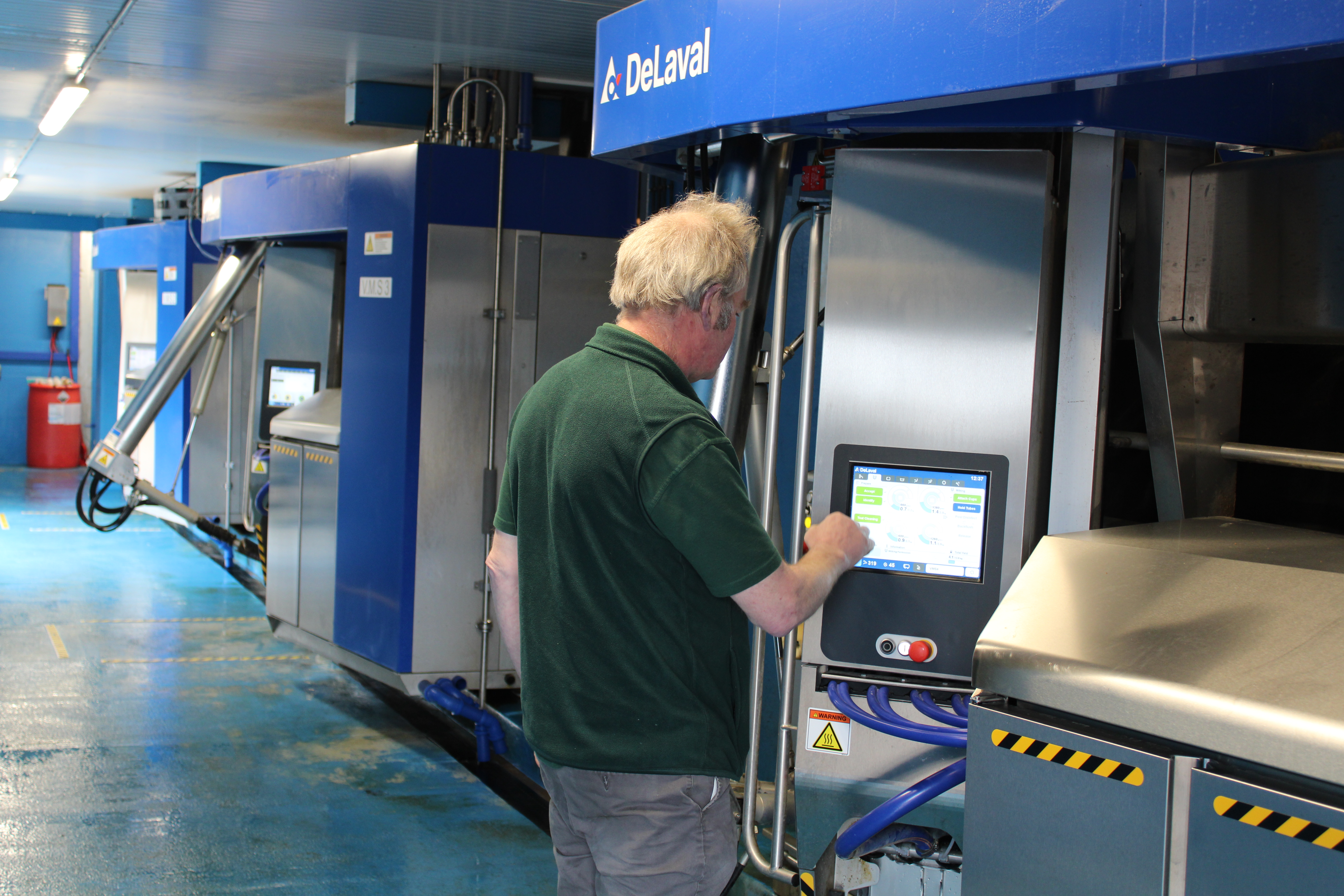
“We had a 20/20 herringbone installed in 1995 and I considered simply going bigger and having a 32/32 but this would have needed two in the parlour, and we were trying to get to three times a day milking but with no extra staff,” he says.
This was largely because the farm’s head herdsman, Kevin Bray, retired in 2024 and Mr Woodin felt sure that the next generation would not be as attracted to the farm if expected to milk at 3am.
“We want to make the farm an attractive place to work to encourage the best workers to join us and drive production. Robots are becoming the ‘go to’ way of milking in a modern era where lifestyle expectations are more balanced than they once were. There are also big benefits for the cows too.”
Whilst the business required shrewd decision-making and futureproof planning, it was evident that the herd would react well to reduced waiting times and the potential for more milkings.
“Waiting time was up to almost seven hours a day for some cows with the old parlour. This was evident in foot health and productivity. Better to have the cows feeding and being milked more often by robots, rather than waiting that long each day.”
Installing robots was carefully managed with DeLaval and TH White to minimise outlay and make best use of the existing space. The shed, 100 metres long and 27 metres wide, was subtly extended to house the robots, creating an L shape with four together and 225 cubicles. A further ‘training’ robot was installed in the old parlour, with 43 cubicles where the herringbone had once been operated.
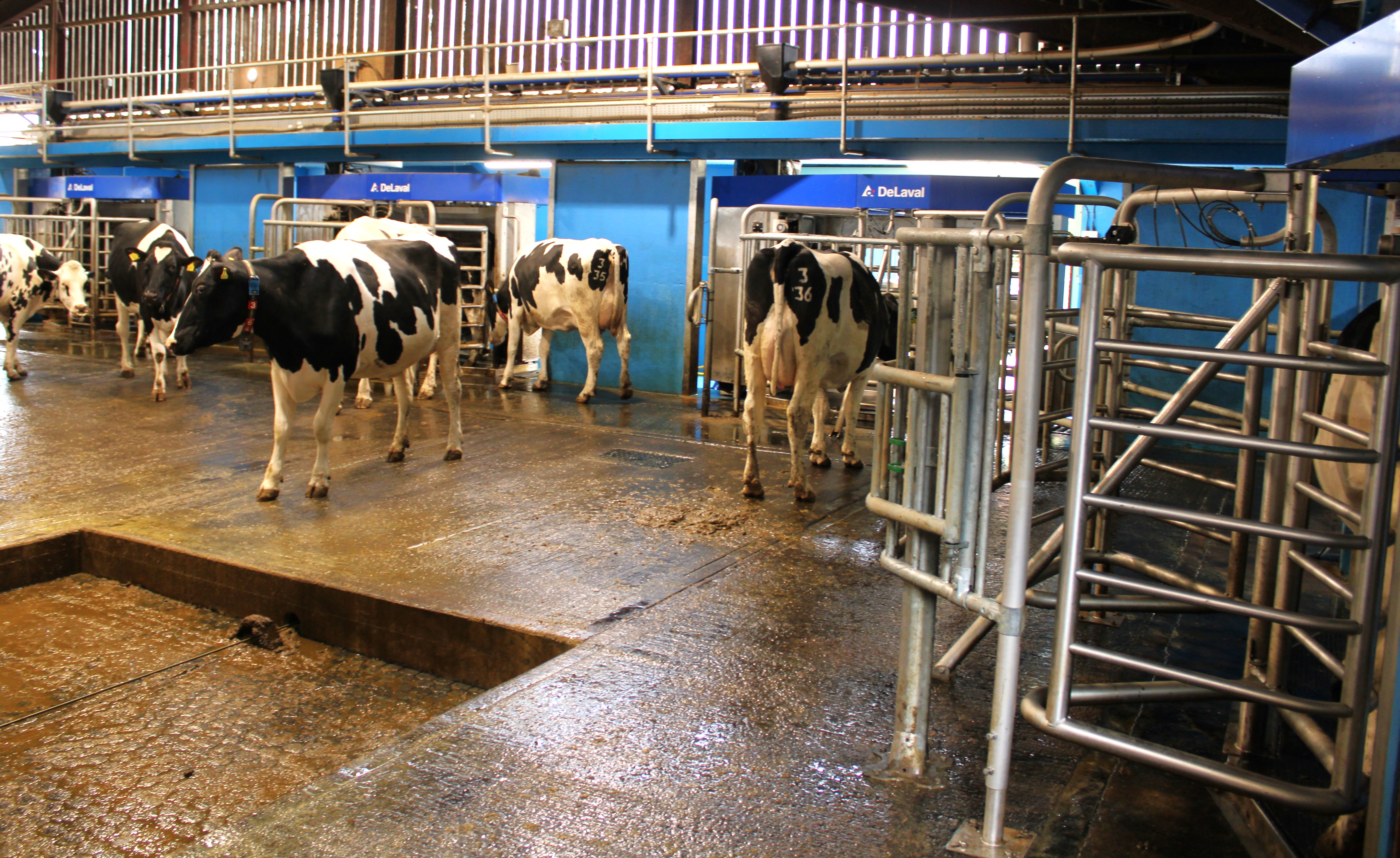
“We took out 30 cubicles to provide a collecting area in front of the robots. We were able to keep our existing footbaths, which work very well, and the rest of the shed was left largely unchanged.”
He admits that despite the surroundings being familiar, start up was compromised by hot temperatures and 120 freshly calved cows in the eight weeks leading up to switching the robots on.
“In hindsight we should have waited a couple of months to switch over, but we were rewarded for our conviction because the cows took to the robots very well. We spent five days feeding them in the robot system but not milking them. Instead, we used a length of pipe to mimic the robot arm operating between the cows legs.”
Naïve touches like this demonstrate how Mr Woodin and the installation team were able to balance an ambitious installation process with cow comfort and health. The high temperatures saw Bactoscans and cell counts rise, but these quickly came down as the temperatures dropped.
“We chose one-handed robots. At Canon Court these are left-handed and the other dairy, Addingrove, is right-handed. We didn’t want to give the cows options, believing it easier to train cows in one method rather than having differences within the herd. When training a heifer, it is easier to offer her one option than two.”
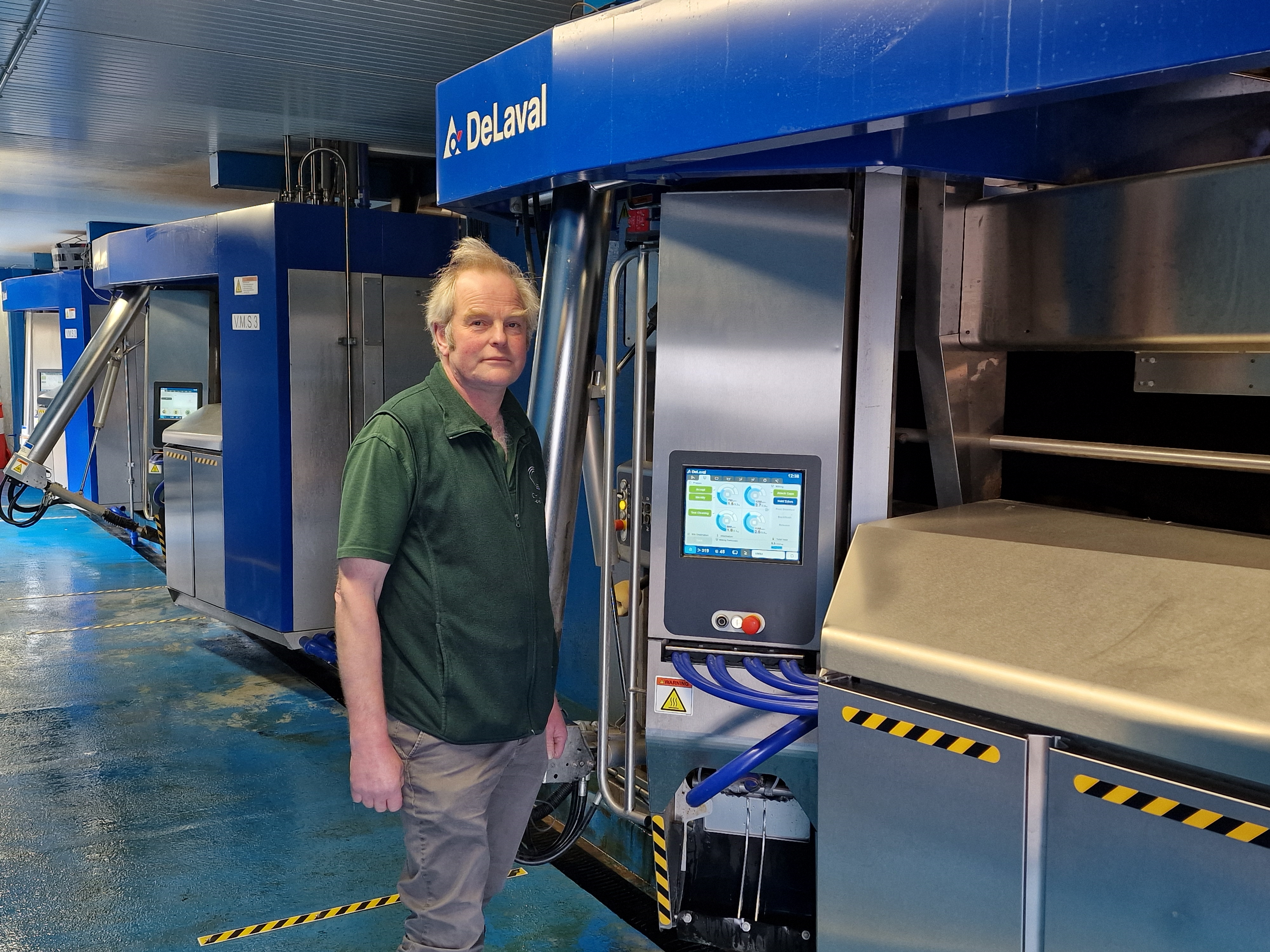
The robots offer practical advantages over conventional milking. However, Mr Woodin has also begun to see how the data from the robots can help decision-making.
“Data from the robots, and our heat detection collars, are helping provide accurate rumination and heat data. We also see mastitis and cell count detection, milking speed and drop offs in easy-to-read reports which help us to identify any problem cows.”
Despite wanting to identify issues with individual cows, he has not chosen to install a segregation area like other robot farms.
“We have no segregation area because we didn’t see the need to take the cows out, and we like the fact the cows go back into the herd no matter what. We have the data, so we know where the issues lie. We wanted to destress the system to maintain the cows’ routine.”
Heat detection is helping to pick up silent bullers, which has the added benefit of reducing vet visits.
“It also helps to spot any potential pregnancy problems, in what we hope is enough time to act to prevent calves being lost.”.
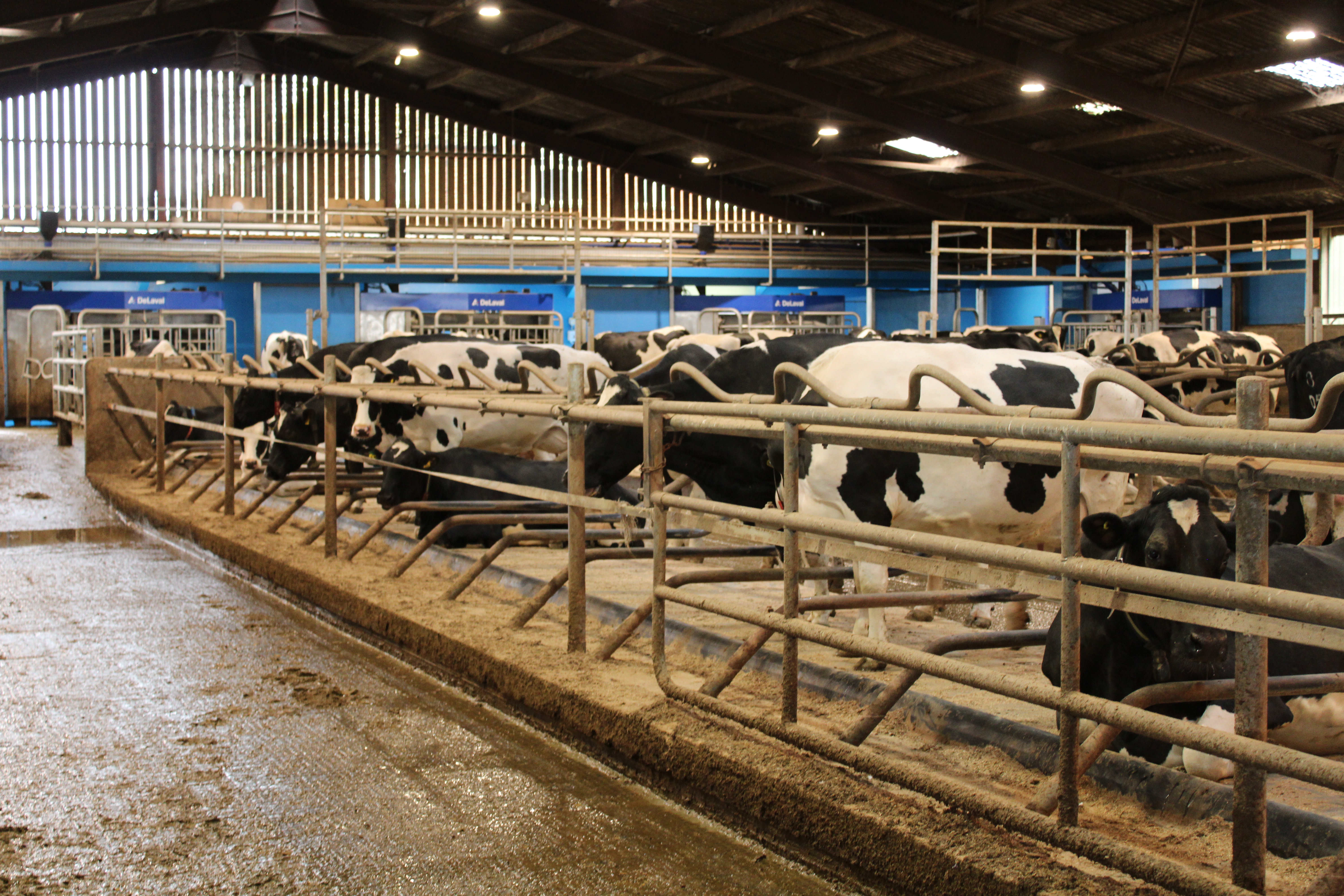
Mr Woodin had given close scrutiny and consideration to operating costs when installing the robots as not to be under the illusion that the farm could make the switch without experiencing a change in overheads.
“Of course, the energy bill is up, but we have not seen big changes in feed costs, which was something we gave particular attention to when weighing up whether to move to robots.”
He suggests that a blend fed to the cows has been reduced in lieu of more concentrate. The herd has always been fed at the parlour so he also believes there was no significant change when the robots were introduced.
“We feed a non-mineralised feed through the robots which averages to 4.5 kilos per head. In the shed is a basic ration; 6 kilos per head at 38% DM, 16% protein with 38% NDF.”
The cows are fed a flat ration for the first 100 days of the lactation and then fed to yield. A TMR of grass, maize, blend, brewers grains and compressed pulp with minerals has been developed by Mr Woodin to balance what is fed at the robots.
“Yields are rising steadily, and the robots have been integrated well. We have four people running the whole dairy unit at Canon Court and they now have more time to concentrate on youngstock whilst also benefiting from a better work/life balance. We are all confident that we can grow to 280 in milk with this setup, which will be a comfortable number for the foreseeable future,” he concludes.
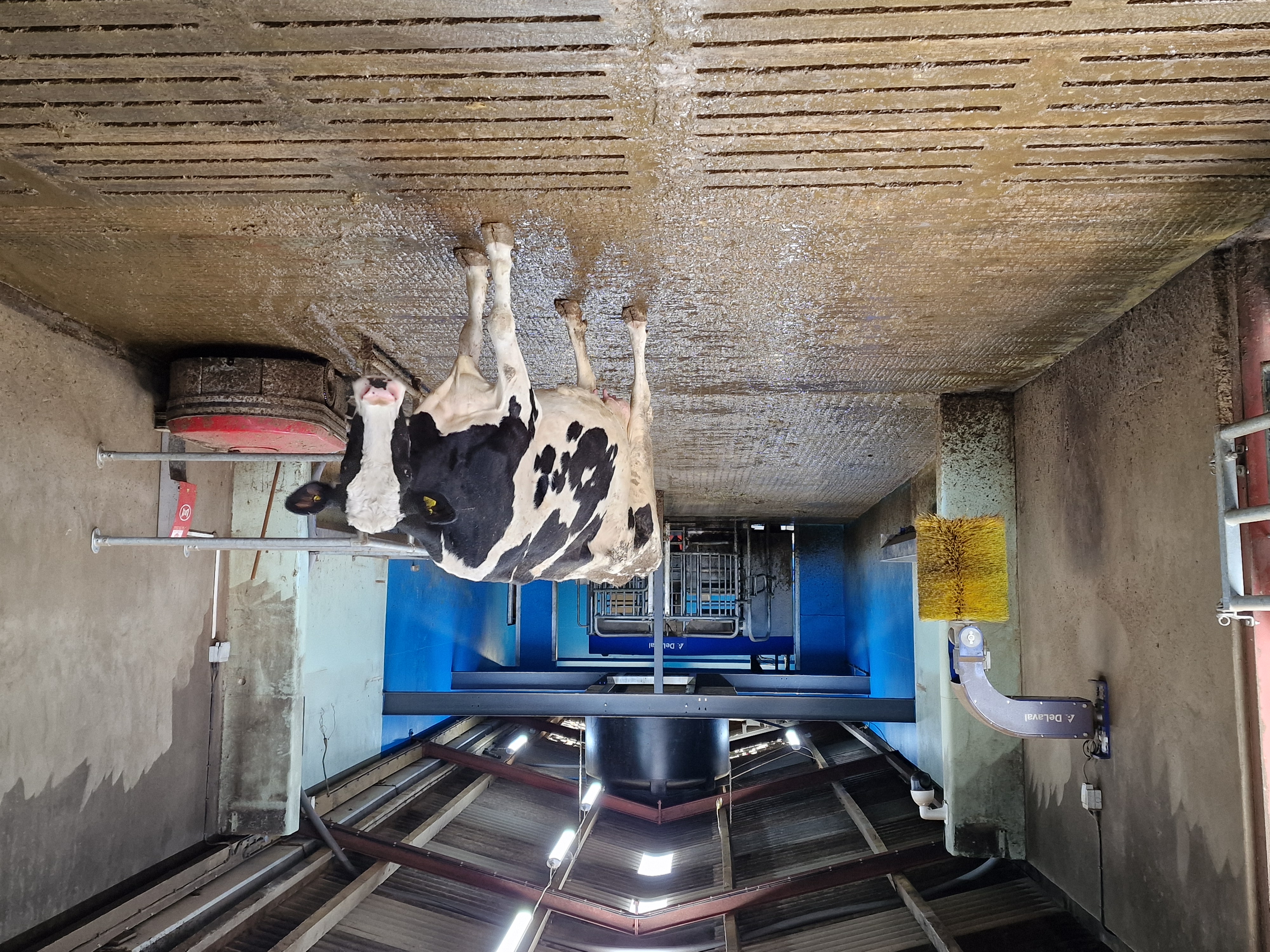
Farm Facts
Chilton Home Farms
- Canon Court Farm
- 250 cows in milk
- 2500 acres including 1000 acres of combinable crops, 170 of maize, 250 for temporary grass and the remainder for permanent pasture.
- 5 DeLaval VMS 310 robots
- Sainsburys contract
- Butter fat 4%
- Protein 3.3%
- SCC 180
- Up from 32 to 37.5 litres per cow per day
For more information on the DeLaval VMS V300 series of milking robots click here.